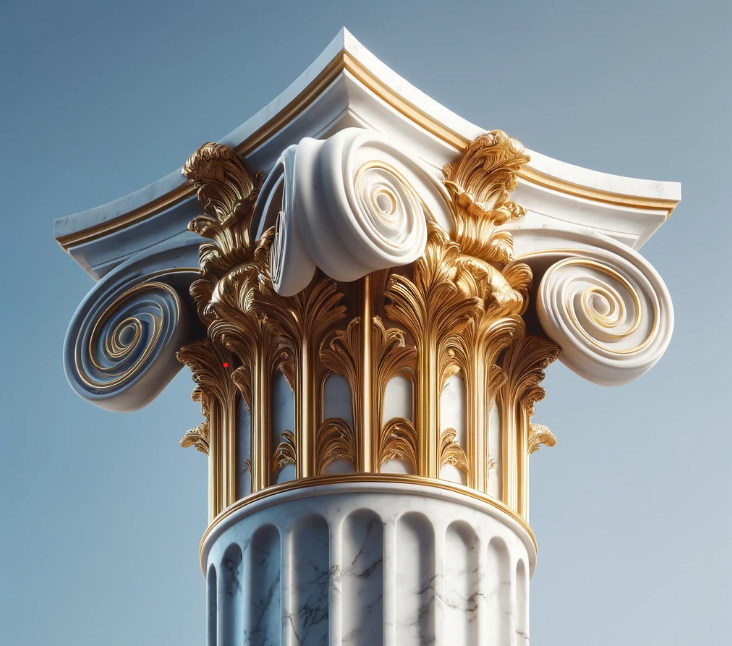
The Doric column, a hallmark of classical architecture, traces its origins to the ancient Greeks, particularly flourishing during the Archaic period around the 7th century BCE. Its invention is attributed to the architectural innovations of the Dorian Greeks, who sought a robust, functional, and aesthetically grounded structural element for their constructions. The Doric order, of which the Doric column is a principal component, is considered the earliest and simplest of the classical orders of architecture, which also include the Ionic and Corinthian orders.
The design of the Doric column was driven by the Greeks’ pursuit of harmony and proportion, principles deeply embedded in their philosophy and understanding of the cosmos. Unlike its more ornate successors, the Doric column is characterized by its sturdy, fluted shaft, which tapers upward, meeting a simple, unadorned capital that directly supports the structure’s entablature and the roof. This lack of base and straightforward design not only provided the necessary structural support but also conveyed a sense of strength and stoic beauty, mirroring the ideals of Greek society.
The Doric column invention responded to both practical and symbolic needs. Practically, it was engineered to support massive structures such as temples, meeting halls, and treasuries. Symbolically, its robust and minimalist aesthetic reflected the Greek ideals of clarity, order, and balance, serving as a physical manifestation of their values and worldview.
The enduring appeal of the Doric column as a classic structure lies in its embodiment of these ancient ideals. Its influence persisted through the centuries, resurfacing prominently in Roman times, and experiencing a major revival during the Renaissance. Today, it continues to be celebrated in Neoclassical architecture and beyond, symbolizing not only architectural integrity and durability but also an aesthetic that transcends time, embodying the foundational principles of Western architectural tradition.

